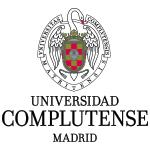Genomic Plasticity of Vibrio cholerae
Investigación publicada en International Microbiology
1 de septiembre de 2017
Vibrio cholerae is one of the deadliest pathogens in the history of humankind. It is the causative agent of cholera, a disease characterized by a profuse and watery diarrhoea that still today causes 95.000 deaths worldwide every year. V. cholerae is a free living marine organism that interacts with and infects a variety of organisms, from amoeba to humans, including insects and crustaceans. The complexity of the lifestyle and ecology of V. cholerae suggests a high genetic and phenotypic plasticity. In this review, we will focus on two peculiar genomic features that enhance genetic plasticity in this bacterium: the division of its genome in two different chromosomes and the presence of the superintegron, a gene capture device that acts as a large, low-cost memory of adaptive functions, allowing V. cholerae to adapt rapidly
Escudero JA. y Mazel D.
| Bacterial Genome Plasticity (BGP). Department of Genomes and Genetics. Institut Pasteur. | |
| Centre National de la Recherche Scientifique (CNRS). | |
 | Bases Moleculares de Adaptación. Facultad de Veterinaria. Universidad Complutense (UCM). |
 | Servicio de Zoonosis de Transmisión Alimentaria y Resistencia a Antimicrobianos (ZTA). Centro de Vigilancia Sanitaria Veterinaria (VISAVET). Universidad Complutense (UCM). |

